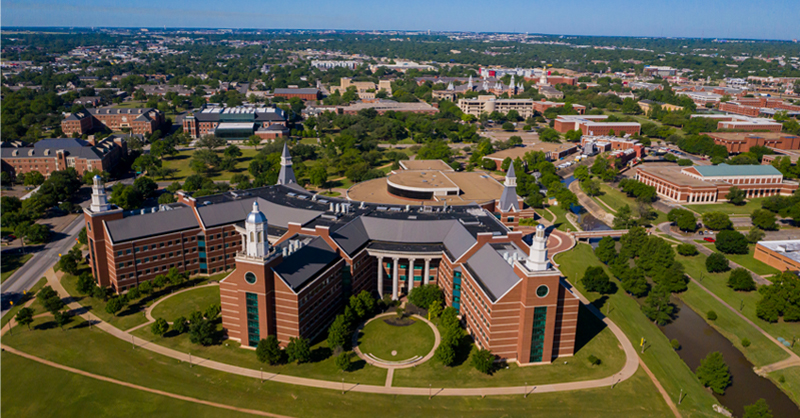
Generally speaking, the phrase “data integration project” probably doesn’t fill most people, whether in IT offices or admissions offices, with joy. However, it’s different when you work with Liaison. Unlike our competitors, we don’t just deliver software and exit the picture. Thanks to our expertise and ongoing dedication to delivering unparalleled service, the short- and long-term benefits of a Liaison data integration initiative make life easier for everyone, from IT specialists, to admissions teams, administrators and applicants alike.
At Baylor University, integrating Liaison’s EngineeringCAS™ — the only Centralized Application Service (CAS™) for graduate engineering programs — enhanced not only the engineering program’s application experience, but also the collaboration and admissions processes of several other departments across campus. The lessons learned by everyone involved highlight the benefits of embracing new technology, services and partnerships.
By the time Baylor joined EngineeringCAS, the Waco, Texas-based research institution already had several other discipline-specific CASs on its campus, including those used by its physical therapy and public health programs. Why? Because even though each of Baylor’s programs serve different types of students and professions, they all came to the conclusion that the application technology and marketing benefits provided by a CAS offer the most effective way for applicants and admissions offices to discover and interact with each other.
A passion for making life better
As Baylor was preparing to integrate EngineeringCAS, leaders there decided it also made sense to take the next step forward by centralizing and streamlining all of their CASs simultaneously. They were aware of Liaison’s extensive resources available for such a job — including its five-phase, 21-step framework created specifically to help institutions accomplish successful CAS data integrations — and asked Liaison to help.
“The goal was to create a process to make life better,” said Associate Dean Christopher M. Rios, Ph.D. “We’re now expecting to see a time savings for IT and a better experience for the applicants and the faculty reviewers. This is a win-win situation.”
According to Dr. Rios, engaging all of the university’s stakeholders early in the process was the key to success.
“One of the things that has helped me develop my relationship with IT is recognizing that their work is critical,” he said. “Admissions is a core function of the institution and it is increasingly dependent on technology. We had to bring our IT team into the conversation early. Understandably, they’re frustrated when you bring them into the conversation later, because they can see potential complications that may not even be on your radar. Ultimately, it allowed us to better serve those programs that had a slightly disconnected relationship with our admissions process.”
“Before we made decisions, we brought everyone together, including Liaison, and asked, ‘What do you want this process to look like?’ It’s easy for those of us who come from the academic side to overlook, or take for granted, the people on campus whose passion it is to make the university work. But sitting in on these conversations — even when I was way out of my depth — gave me a real appreciation for the crucial work they do. They have a real passion for improving the lives of the people using the processes we were developing.”
Michael Scott, a joint MBA/MSIS student at Baylor who also worked part time on the integration project, said the IT department’s goal was to “standardize everything and streamline everything.”
“Centralizing our CASs during the EngineeringCAS integration created efficiencies across campus in almost every area, from designing the applications, to writing requirements to standardizing and streamlining data exports,” he said.
Scott also described Liaison’s support team as “amazing.”
“Liaison was very supportive and answered all of our questions very quickly,” he said. “Baylor is really starting to grow and we’re at a pivotal point. Establishing the standardization of integration was critical to our future success.”
“Liaison’s been great”
The ability to add custom questions to the EngineeringCAS application also pays dividends, according to David Winkler, a Ph.D. student in higher education leadership who works as a graduate assistant in enrollment at Baylor.
“Those custom questions really help us dial in and learn more about applicants before we look at their applications,” he said. “That allows us to provide resources and assistance to students who might need them.
“Liaison is listening to institutions,” he said. “When we had questions or suggestions or recommendations about future integrations of CAS, they were willing to look into them.
“Liaison’s been great,” he added. “Not only with this transition, but also with how you should talk to students, and how to get students interested in your program. Without a doubt, the decision to work with Liaison was the key to our success.”